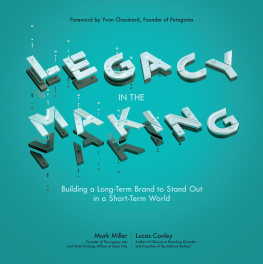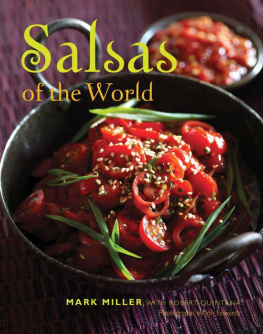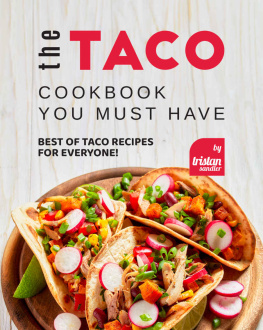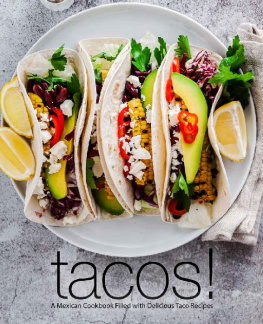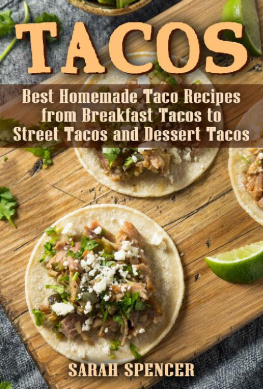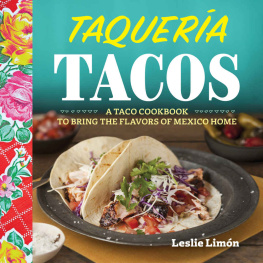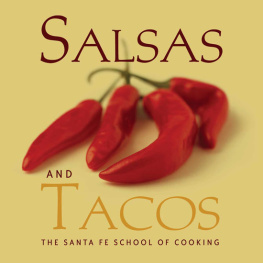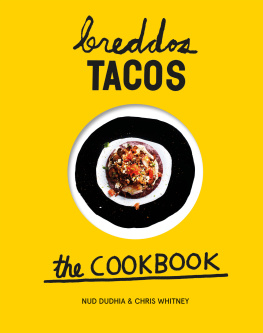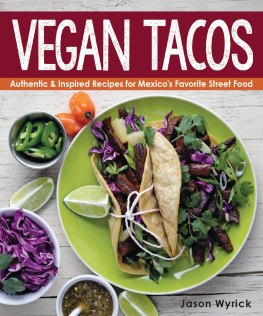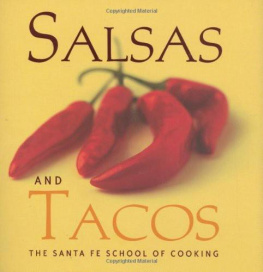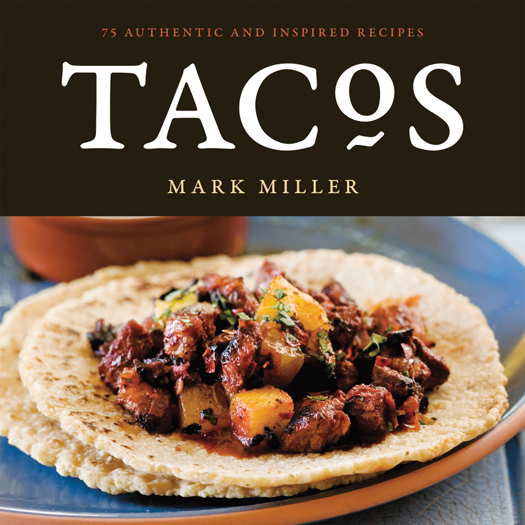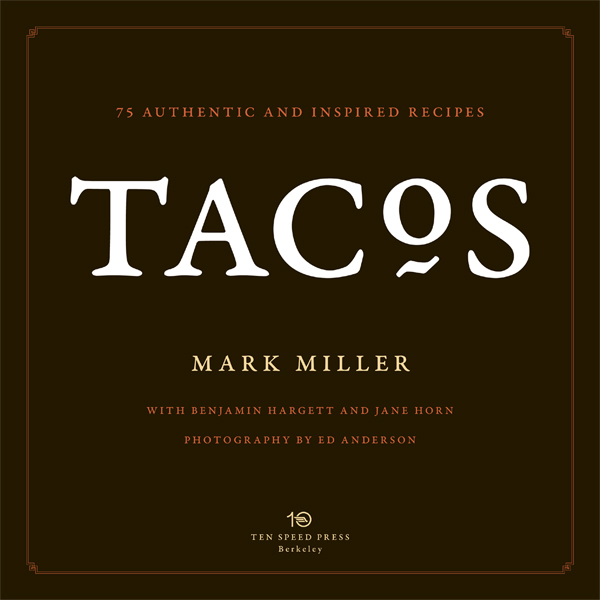Copyright 2009 by Mark Miller
Photography 2009 by Ed Anderson
All rights reserved. Published in the United States by Ten Speed Press, an imprint of the Crown Publishing Group, a division of Random House, Inc., New York.
www.crownpublishing.com
www.tenspeed.com
Ten Speed Press and the Ten Speed Press colophon are registered trademarks of Random House, Inc.
Library of Congress Cataloging-in-Publication Data on file with publisher
eISBN: 978-1-60774-163-3
Cover and text design by Ed Anderson
Layout and production by BookMatters
Food and prop styling by Jenny Martin-Wong
v3.1
For James and Kelly, good friends and fellow taco trail travelers, who helped me with this book and ate many, many tacos. And for all the taco lovers out there.
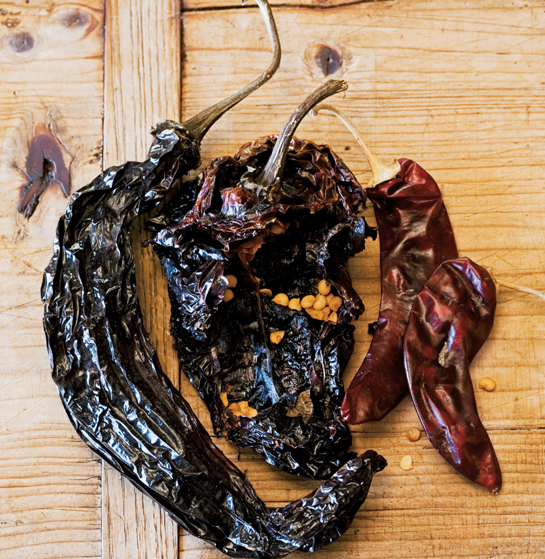
CONTENTS

THE ART OF THE TACO
I had a New England childhood and was always interested in food, cooking, and particularly markets. They were and still are an adventure for me. I loved to go shopping with my mother at our local First National, which still had sawdust on the floor in front of the butcher department. Then there was the exotic Italian grocery with its massive, overflowing window displays of every product from their sun-drenched culture (so anti-Puritan in New England!), the stores for salami and sausages, the Jewish delis for pickles and lox, and the fishmongers for live lobsters with huge claws that crawled along the bottoms of the deep cold-water tanks.
I spent summers far away from New England in a more exotic culinary culture, in Mexico at a large hacienda near Guadalajara owned by family friends. In charge of the kitchen were three generations of cooks from one familygrandmother, mother, and daughterwhose food and sauces were sublime, a revelation to me. In the early mornings they would go to the market to buy the fresh masa for the day, the sweetest, most colorful fruits, the ripest fresh vegetables picked just hours earlier from local gardens, cuts of meat butchered from whole animals. Id always tag along on this food adventure.
When the days shopping was finished, we always had time for a tacothe street snack everyone eats when theyre not at home or when they dont have the time or money to sit down at a restaurant. The women were as picky about tacos as they were about the ingredients for the daily meals. I would see all of the taco stands at the marketplace lined up. But my local taco guides were almost fierce in their determination that we would eat only from their favorites. This is the best for pork, theyd say, urging me to a particular stall. I would soon have a wonderful taco of carnitas in my handsucculent browned pork pieces with a touch of green cilantro and spicy roasted tomatillo-rbol sauce, all wrapped with a fresh corn tortilla. It was so different from the bologna on soft white bread that I was used to back at school. This food was alive, colorful, aromatic, tasty, crunchy, juicy, flavorfulas if I had crossed a new frontier of food experience.
The tacos were always simple thingsdelicious aromatic stewed or grilled meat, a few leaves of cilantro, a bit of chopped white onion, a modest spoonful of spicy salsa, the freshly griddled tortilla lightly coated with cooking juices and tasting intensely of roasted corn. Cupping the taco in my hand, I sensed the warmth of the tortilla pulled seconds ago from a hot comal. It was a snack prepared as I watched, made as fresh as could be with ingredients often purchased just moments before at the same market. And everyone around meadults, children, workers, tourists, business peoplewas buying, eating, and enjoying a taco just as I was, and then getting on with their day. When the market was over, the food eaten, the customers back home, at school, at work, the vendors closed up.
Street food as I knew it in the United States was never prepared on the spot. Vendors didnt cook, they assembled. Hot dogs and buns came from the factory and were kept warm in steamers, relish was portioned from a jar. Ice cream was scooped from tubs in a freezer or sold already packaged. Nothing was cooked from scratch in front of me. The tacos at the market were fast food unlike any Id ever had in Boston.
There are taco trucks in parts of Boston today, as there are in any major American city with a large Hispanic population. But I never saw any growing up, certainly not on Cape Cod or in Maine, where we spent short holidays. But times have changed, and the taco has become an accepted part of American food culture. As a matter of fact, my good friend (and great chef) Ken Oringer opened a taqueria across from Fenway Park not long ago.
My market tacos were always finished in a few drippy mouthfuls. I loved how good they tasted, but just as much I loved the whole taco experienceit was fun, immediate, social, a constantly changing community of fellow taco eaters. No matter that some of us might also patronize expensive restaurants or had a cook at home. Or that others barely got by day to day. For one moment, in one place, we gathered round to eat something that costs almost nothing, sharing the setting, the culture, and the tastes of that particular place. Even today, part of what I love about eating tacos in Mexico is that its still a shared cultural and aesthetic experience, an agreement on what good food is and, in particular, what good tacos are all about.
As Ive traveled through Mexico in all the years that followed, Ive learned which of the taco stands to head for in any particular place, the ones that tell me where I am and where I can eat good local cuisine better than any guidebook. Its that special sense of place that comes with eating local food in a particular environment, a comfortable grounding of where I am.
When I think about the Yucatn, and in particular its capital, Mrida, its going to be the pork taco stand at the market, where you must go early, no later than 8 AM, or they will sell out of their specialty, the fantastic cochinita pibilmarinated suckling pig cooked overnight in a pit, served with an escabeche of red onions flavored with oregano and a little fiery habanero salsa. There is no other place that makes it like that one, where Ive gone for thirty years. I wrap it all up in a warm corn tortilla and know that Im now in Mrida.
In Ensenada, its the vendor who comes in from the countryside only between 8 and 10 in the morning and sets up outside the lumber yard. He sells thirteen wonderful kinds of tacos from his flatbed truck, slow-cooked with meat from his own herds of goats and sheep. And all the local carpenters, construction workers, and passersby like me show up to buy and to eat them together.
In Guadalajara, its the stand in a hard-to-find, way-out neighborhood open only from 7 to 10 in the evening, which prepares a very special taco made from cows uddertaco de ubre. When Im in Mexico City, its the one just off the Zocalo that makes fish tacos cooked a la plancha (on a griddle), served with this wonderful salsa brujo (witchs salsa).
Tacos are as much a part of daily social life in Mexico as the Catholic Church. In all parts of Mexico, taco carts


